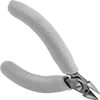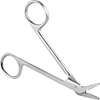Filter by
For Use On
For Cutting
For Maximum Steel Wire Rope Diameter
For Maximum Stainless Steel Wire Rope Diameter
For Maximum Copper Electrical Cable Wire Gauge
Cut Profile
Grip Style
Jaw Opening Style
Opening Style
Handle Material
For Maximum Copper Electrical Cable Diameter
For Maximum Aluminum Electrical Cable Wire Gauge
Jaw Material
Export Control Classification Number (ECCN)
For Maximum Data Cable Wire Gauge
DFARS Specialty Metals
Blade Material



























































































































